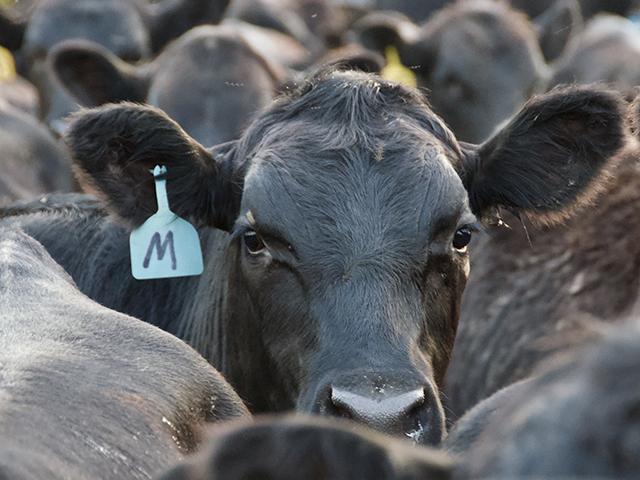Call the Market
A Closer Look at Recent Cattle on Feed & Cattle Inventory Reports
Last Friday, the livestock market was nearly overrun with a plethora of bullish news: a bullish Cattle on Feed (COF) report, the mostly bullish Cattle Inventory report and the gains made in the fed cash cattle market.
In the hustle and bustle of our daily lives, it's easy to glance at a report or a news headline of what the report unveiled, chew the fat on it a bit and then go about your business. But July 25's reports and developments deserve more time and consideration than that. So, let's discuss those report findings in more detail.
First, let's start with the fed cash cattle trade. Feedlot managers appear like prophetic heroes in the market's current success, as they've steadily been able to advance the fed cash cattle market against packers' deepest will. Last week, Southern live cattle traded at mostly $230 to $232, which is steady to $2 higher than the previous week's weighted average. Northern dressed cattle traded mostly at $380, which is $1 higher than the previous week's weighted average. Last week's negotiated cash cattle trade totaled 62,915 head of which 71% (44,769 head) were committed to the market's nearby delivery, while the remaining 29% (18,146 head) were committed to the market's deferred delivery option.
And let's not overlook that packers are actively advancing the fed cash cattle market in the dead of summer when prices are seasonally expected to trade lower.
Then, USDA released two big reports July 25: the monthly Cattle on Feed and the bi-annual Cattle Inventory reports. To read DTN's initial report comments, see: https://www.dtnpf.com/….
P[L1] D[0x0] M[300x250] OOP[F] ADUNIT[] T[]
But the further you dig into Friday's COF report, the more telling it is. The real surprise of that report was the sharp decline in placements that no analysts had predicted. Pre-report estimates stated that placements would land somewhere in the ballpark of 96% to 99.1% of a year ago, but lo and behold, Friday's data unveiled that placements came in much lower at 92% of a year ago -- totaling just 1,441,000 head.
It was especially interesting to break placements down state by state. The only major feeding states that posted a year-over-year increase were Iowa (up 21%) and Kansas (up 14%). Otherwise, all the major feeding states posted a year-over-year decline, with some staggering deficits: Oklahoma was down 27%, Colorado 24%, Texas 18% and Nebraska 13%. This again highlights the biggest underlying factor in today's marketplace -- supplies are inherently thin because of a historical 62-year low in the U.S. beef cowherd.
But the other factor that's increasingly more noticeable is the drop in placements because of the import ban against Mexico. I'm not advocating for the U.S. border to reopen anytime soon to Mexican cattle. There's a piece of me that deeply wishes that more of our market would be stable enough for producers to want to boldly invest in the cattle business so that our imports were minimal, but there I go wishing again.
And last, but not least, the bi-annual Cattle Inventory report was also released, which although there were no 2024 data to compare it to, we were still able to compare this year's data to that of the 2023 data, and to the January Cattle Inventory report data.
Friday's midyear Cattle Inventory report shared that the total number of beef cows in the U.S. totaled 28.7 million head, which is down 1% compared to the data posted in 2023. And the midyear Cattle Inventory report shared that the total number of beef replacement heifers in the U.S. totaled 3.7 million head, down 3% compared to the 2023 data. Given that these numbers are fewer than the data showcased in 2023, largely cattlemen and traders alike found the report to be bullish in its nature.
The only oddity about the Cattle Inventory Report on Friday was the increase in the total number of beef cows in the July report compared to the January report. In January, USDA stated that the total number of beef cows in the U.S. was at 27.9 million head, but on Friday USDA said that the total number of beef cows in the U.S. was at 28.7 million head. So, logically the question becomes: Where did the additional 800,000 head of cows come from? Is it from the reduced cull cow slaughter speeds? Is it from more replacement females calving this spring? Or will USDA revise one of these numbers in January 2026 when the next report comes out?
It seems everyone has been waiting for clear signs of cattle herd rebuilding; because, in past cycles, when the herd began to rebuild, it happened at a vigorous speed. Shortly after, producers' prices rapidly deteriorated.
But I don't believe this build-back is going to be like those of years past. Too many operators are deciding to sell out altogether because of their age, and there's also those willing to operate and ebb-and-flow with the cattle market changes. It remains incredibly challenging to ensure a profit with rising input costs, drought concern in the west, and the sheer lending power that's needed to operate in this business. None of these factors are easy to navigate on their own -- or worse, all together -- which consequently makes producers think extra hard about entering the business at all.
To conclude, I share these findings with you because they affect your business. And as mentioned earlier, I personally think this market is a tiger and no one's grabbed its tail just yet. I personally believe there are plenty of days ahead in the market where the grassroot producers will continue to reap the benefits of tight supplies.
ShayLe Stewart can be reached at ShayLe.Stewart@dtn.com
(c) Copyright 2025 DTN, LLC. All rights reserved.




